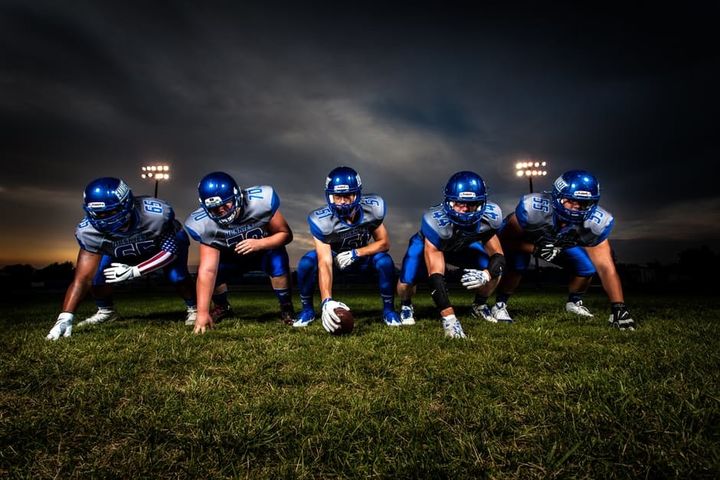
Professional football players are at a higher risk of sleep apnea and sleep disordered breathing compared to the general population
We’re days away from Super Bowl Sunday. It’s time to get out your famous wing recipe and fill up bowls with chips and dip. But while you cheer on your team this weekend, reflect on the fact that the very football heroes that you see on your widescreen are at a greater risk of sleep apnea.
Yes that’s right, sleep apnea – a condition that is characterized as having frequent pauses in breathing or shallow breaths during sleep – affects professional football players disproportionately to the general population.
High profile players such as Buffalo Bill’s superstar, Percy Harvin, and Tony Dorsett of the Denver Broncos are but two of a list of players who have been identified as being diagnosed with sleep apnea. Tragically, the untimely death of Green Bay Packer’s legend, Reggie White, was attributed to complications due to obstructive sleep apnea (OSA).
Football Players are at a Higher Risk for Sleep Apnea
In 2003, a study was published in the New England Journal of Medicine that examined the issue of sleep apnea among football players. The study’s authors examined 52 randomly selected professional football players from 8 randomly selected teams: the Washington Redskins, Chicago Bears, Tennessee Titans, St. Louis Rams, Jacksonville Jaguars, Philadelphia Eagles, New York Giants and the New England Patriots. They found that 14% of this group had diagnosable OSA, a prevalence that is five times higher than a comparison population of non-pro football adults of similar ages who underwent the same testing. The study also found that defensive and offensive linemen – positions that tend to be occupied by heavier set individuals -- are at a higher risk of OSA than other positions: 34% of the players in these positions in the study population were found to have sleep apnea.
It is also documented that disordered sleep does not subside once football players hang up their cleats for the last time, but, rather, continues on and can even worsen into their retirement. The Journal of the American College of Cardiology published a study that examined 257 retired football players, finding that 52.3% of their test subjects presented sleep disordered breathing (SDB). The prevalence of SDB by position was also measured, it was found that linemen were more likely to exhibit the condition: 61.3% of linemen in the study had SDB compared to the 46.6% of non-line men who had it.
What Makes Them Great Athletes Also Puts Them at Risk
Ironically, the physical attributes of top performing football players are also those that lend themselves to making someone predisposed to sleep apnea. Though they may eat a balanced diet and be physically fit, football players tend to have BMIs that are higher than other categories of athletes. Defensive football players, in particular, tend to have BMIs that are considered “obese”. Unfortunately, a high BMI is a significant risk factor for sleep apnea.
The large, muscular necks – or those enlarged due to an increase in fatty deposits -- of many players can also lead to a narrowing of the airway. When an airway becomes narrowed, it is at a greater risk of partially collapsing, likely leading to snoring, or closing off completely, as would be the case for those with OSA. The actual weight of a football player’s heavier torso and abdomen also make it harder for proper ventilation during sleep, especially for those who tend to be back-sleepers.
Tackling the Issue
Armed with this knowledge, we can do more for our professional, and up-and-coming, football stars. Sleep apnea testing ought to be on the menu for annual physicals given to all NFL players. The coaches and parents of high school and college football players need to be educated on the issue and encouraged to have their kids assessed, especially for those players at an even greater risk, like linesmen. Promoting healthy lifestyle choices such as eating a balanced diet and getting an adequate amount of sleep consistently can also help football players mitigate their risk.
Turning a blind eye to the symptoms of OSA and leaving the condition untreated can result in a whole host of medical complications. Fortunately, there are a number of effective treatment options for those diagnosed. If you’re a football player and you are concerned that you may be at risk of OSA, talk to your dentists and/or physician to be put on the right path for diagnosis and treatment.
But for now, let’s go defense!
